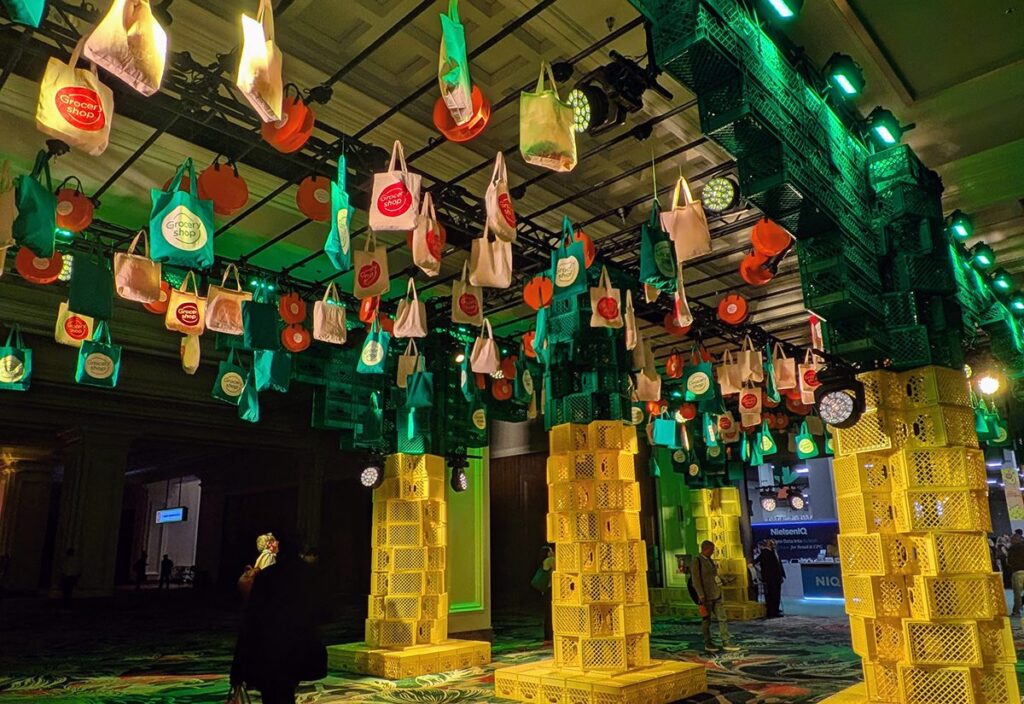Krispy Kreme Doughnuts ran a back-to-school promotion last fall that schools hated (because there are too many overweight kids already) and students
From the
Direct From Muldoon: Marketing Magnets
Krispy Kreme Doughnuts ran a back-to-school promotion last fall that schools hated (because there are too many overweight kids already) and students — and probably their parents — loved. It worked like this: Get an A and earn a free Krispy Kreme (up to 6). Impress your peers…get several A’s and take them for a treat. Didn’t make the A student seem like such a dork, either. Rewarding the younger generation for achievement, and getting them to associate reward with your product, is a marketing coup.
Heinz has a “talking label” contest for its ketchup. Not happy with ordinary product labels, customers can have their sayings on these. A note on Heinz’s Web site says, “We received a huge response from our first talking label contest and now our ketchup is begging for more of your ideas.” The reward? Your words are talking to consumers all over America…oh, plus a free T-shirt and a year’s supply of ketchup.
Where are our talking catalog covers? Or at least consumer-involved covers? One of our clients once had an involvement cover, a contest offering kids the chance to become a model. Response was overwhelming and, unexpectedly, moms bought the client’s clothing because they thought, erroneously, that it would give them a better chance of winning.
Free models and increased response. Not a bad result.
Years ago, then-client Pfaltzgraff used a promotion that invited customers to bring their old dinnerware to the local store and dump it in a barrel or box. Besides getting the satisfaction of at last having a place to throw out dinnerware they’d wanted to get rid of for years, Pfaltzgraff also gave these unburdened shoppers an impressive discount on their replacement dinnerware.
Perhaps a clothing cataloger could have a seasonal charity drive for old clothes and reward customers with dollars off their purchases. At one time Hanna Andersson conducted a year-round program that took clothing their customers’ children had outgrown and donated it to the needy; now it has a Children’s Foundation. But here we’re talking about a less coordinated event that’d run, for example, during the winter holidays.
Neet Feet found a way to get its name out there without a penny of advertising expense — they embossed it on the soles of their shoes. Step on sand, step away, and there’s Neet Feet’s imprint. Another reminder to put your logo on every single item you possibly can.
Giveaways continue to have impact. But do try to think beyond key chains and memo pads. The Dallas Morning News recently reported that Volvo gave away condoms in a matchbook imprinted with the slogan “Open for Safety,” a memorable connection to Volvo’s reputation for safe cars.
According to Sales & Marketing Strategies and News, “research has shown that adding a dimensional product that is related to the theme or topic of the campaign increases the response to a particular program by 3.3%.”
But take care with what you offer. The Dallas Morning News also related the story of a Consumer Reports premium, a glove-compartment kit. Unfortunately, the kit’s flashlight dangerously overheated and the tire gauges were faulty, a major embarrassment for a company that prides itself on its assessment of product quality.
Product type is not a limitation in promotions. Check out Duck Tape’s Web site and you’ll see what I mean. Just a few of the innovative promotions on this site are:
-
Duck Brand Duct Tape Stuck at Prom Scholarship Contest. You and a date attend your prom wearing duct tape in some way or other, then send in your photo to enter.
-
Duck Brand Duct Tape Rock About the Roll Contest. Solo artists, duets or groups can make up an original duct-tape-related song and submit it to have a chance to win.
-
Duck Brand Around the World Contest. Send in your vacation photos featuring you and your Duck Tape. Monthly winners.
Yes, people actually do these things. This is one way a product achieves cult-like status.
If you choose to try promotions, don’t think of them as one-shot deals. They should be part of a campaign that coordinates all marketing avenues: print, Web, space, TV, whatever. Then put together a plan.
-
What’s your objective? How will you judge the effectiveness of this effort? What, specifically, must the promotion do to be considered effective?
-
How does the message or theme tie in with your overall positioning? The point is to strengthen and reinforce it, not just give something away.
-
Is the item relevant or valuable to your target audience? Probably the best premium I was ever involved with cost only 25 cents, but it was a huge success. A yarn organizer, hard-to-find and greatly needed by craftspersons, was the well-loved gift offered to stitchery customers.
-
Is the promotion cost- and employee-efficient? What will be the immediate and long-term returns on your investment? The answer requires tracking, but also pre- and post-promotion research.
-
How much will it cost to distribute the product (if a product is involved)? This is one area that tends to be overlooked and can be an unpleasant surprise. One example: a free poster that’s cheap to produce but quickly becomes more expensive when the cost of the necessary mailing tube is added.
-
Is the promotion memorable? Does it have potential pass-along or high retention value? Is it something that will be talked about, gaining you word-of-mouth advertising? True, you need a profit-and-loss statement to understand the financial ramifications, but also be sure to include the customer bonding and potential new customer acquisition value.
-
Are you ready to be flexible and open-minded? You’ll never create a unforgettable campaign if you just follow the rest of the crowd.
KATIE MULDOON (kmuldoon@muldoonandbaer.com) is president of DM/catalog consulting firm Muldoon & Baer Inc., Tequesta, FL.



